Here we go. Strap on your agave nerd hat! I have been working on this new piece for months. I put up my first post on this topic in May, but I have learned more since then and this list is better. Perfect? No. But better. You see, it is a difficult topic to tackle. Let’s start with the mezcal regulators.
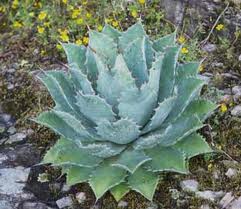
Mezcal had its first modernized set of government regulations, called NORMA in 1994. A new NORMA was drawn up for mezcal in 1997 and revised in 2005. Under the new laws, all mezcal production must be certified in order to sell or export it. The NORMA lists only 5 of the common varieties of agave from which mezcal can be made, such as espadin and tobala.
However, the NORMA allows for other species of agave to be used to make mezcal. This explains why the exact number of agave varieties that can
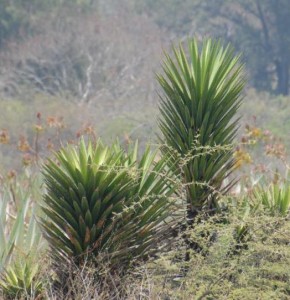
be used to make mezcal is a moving target. I have seen 16, 23, 28 and 30. Also, given that there are estimated to be upwards of 1,000 mezcal producers in 8 regulated states with over 200 known varieties of agave (though not all 200 have the sugar content to make mezcal), I would bet that mezcal has been made with more than 30 types of agave. The vast majority of these producers are small palenques (essentially farms), so they use the agave that can be found right there.
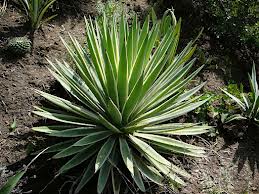
Every mezcal is different, like wine. The agave matters as do so many other factors. Mezcal is a culture. It is of the land. Passed down generation to generation. Centuries old traditions. The hills. The palenques. Isolated villages. Traditions. Passions. Time. Sun. Terroir. Tequila is made from one type of agave. Mezcal, on the other hand can be made from many types of agave. They are grown in different regions of Mexico with different climates, different elevations, different textures and tastes. The mezcaleros use varied techniques in the production process, many that have been passed down for generations in their families. They don’t even know how long in many cases. It’s just what a young man learned from his father. And his father before him. And on down the line.
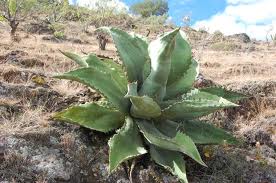
But it always starts with what agave is grown in the hills around you? Is it espadin? Tobala? Barril? Cupreata? Where is the water from that is used in the distillation process? A mountain stream? A well? A river? What wood do you use to line the roasting pits? Mesquite? Eucalyptus? Oak? Use what you have. Live off your land. Make great mezcal. And many mezcals are great. Widely varied for all the reasons above, but again, it starts with agave. I am not sure anyone really knows how many different types of agave are used to make mezcal. Is there an official list? Certainly not. NORMA rules? No. COMERCAM? Nope. So how do you know? You don’t. Just one more thing to love about mezcal – all the answers are not necessarily there. You can’t master it.
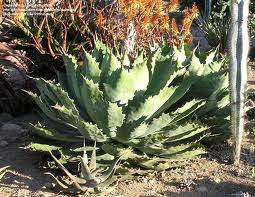
So I am stating upfront that this is not THE list. It is my compilation after much inquiry, research, poking around, a tidbit here, a tidbit there. You get the idea. But what I do know is that I have not found a more complete list – not even close. That is not saying that one does not exist. And with certainty, some of you can help add to this list (and join the Mezcal PhD Wall of Fame – does not exist yet, but its coming!). So join the conversation. As Jerry Mcquire said: “Help me…help you. Help me, help you.”How did I put this list together? As you will see, most varieties, sub-varieties or sub-species are associated with specific brands. However, in some cases, while I could not find a specific brand, I did find multiple references to the fact that mezcal is made with this type of agave. In my list, it counts as a type of agave from which mezcal is made if I can find a brand or credible reference that says mezcal is made from the species, variety, sub-variety or sub-species. For example, with the species Agave American L. variety Oaxacensis, I find 3 sub-varieties from which mezcal is made: coyote, arroqueno, and sierra negra.
As my friend Judah Kuper discusses:
“Siete Misterios gets their mezcal from the Sola de Vega region. It’s all “Olla de Barro”. The interesting thing is when you ask the mezcaleros from Sola to point out an Agave Arroqueño and an Agave Coyote, they are completely different and don’t appear to be of the same variety at all. Arroqueños are huge and have a much broader leaf.”
(Judah, by the way, is bringing some new artisanal mezcals to the U.S. soon – check out Mezcal Vago)
The point is that some people would say that coyote is just another name for the more commonly known arroqueno (Agave American L. var Oaxacensis), but that is not true – they are distinct sub-varieties. So they each get a place on my list.
I am confident there are errors here. Likely errors are that I have double counted as there are multiple common names for the exact variety. But again, as we say in New York, “If you see something, say something” so let me know if there is an error.
So here is my list of 47 unique species, varieties, sub-varieties or sub-species of agave from which mezcal is made. 47? Yeah, it feels too big to me too – reinforcing my view that mistakes have been made. You will see that the numbering (to get to 47) is driven by the Sub-Variety or Sub-Species because each is a unique agave from which mezcal is made.
At any rate, I hope you find this useful and let me know your thoughts. And of course, as always, drink mezcal!!
| # | Agave Species | Sub-Variety or Sub-Species | Sample Brand | Reference |
| 1 | Agave americana L. var. Oaxacensis | Maguey de Coyote | Siete Misterios | |
| 2 | Agave americana L. var. Oaxacensis | Arroqueno | Del Maguey | |
| 3 | Agave americana L. var. Oaxacensis | Sierra Negra | Mezcalero Release #4 | |
| 4 | Agave americana L. var. Oaxacensis | Blanco | None known to me | Scorpion website |
| 5 | Agave americana | Americano, Serrano, or Mezcal | None known to me | Mezcal de Artes |
| 6 | Agave potatorum | Tobala | Los Natuales | |
| 7 | Agave karwinski | Madrecuixe | Fidencio | |
| 8 | Agave karwinski | Bicuishe | Mezcalero Release #6 | |
| 9 | Agave karwinski | Tobasiche | Wahaka Ensemble | |
| 10 | Agave karwinski | Barril | Scorpion | |
| 11 | Agave karwinski | Tripon | Mezcal Real Minero | |
| 12 | Agave karwinski | Largo | Mezcal Real Minero | |
| 13 | Agave karwinski | Cirial | Mezcal Union | |
| 14 | Agave karwinski | Verde | Espiritu Lauro | |
| 15 | Agave karwinski | Mexicano o San Martin | Espiritu Lauro | |
| 16 | Agave rhodacantha | Mexicana Amarillo | Siete Misterios | |
| 17 | Agave rhodacantha | Do ba Daan | Pierde Almes | |
| 18 | Agave rhodacantha | Cuixe | Mezcal El Jolgoria | |
| 19 | Agave rhodacantha | Mexicano | Cuish Mexicano | |
| 20 | Agave cupreata | None | Mezcales de Leyenda | |
| 21 | Agave angustifolia | Espadin | Most mezcals | |
| 22 | Agave salmiana subsp crassispina | Salmiana | El Tinieblo | |
| 23 | Agave salmiana subsp crassispina | Horse (Caballo) | El Koch | |
| 24 | Agave maximiliana | Lechuguilla, Manso, Tecolote | None known to me | Mezcal de Artes |
| 25 | Agave univittata | Estoquillo, Mezortillo | None known to me | Mezcal de Artes |
| 26 | Agave durangensis | Durangensis | Mezcales de Leyenda | |
| 27 | Agave durangensis | Cenizo | Mezcal El Mal Pais | |
| 28 | Agave tequilana | Blue Agave | All tequilas + some mezcals | |
| 29 | Agave inaequidens | Raicilla | Raicilla yo Soy Mexicano | |
| 30 | Agave marmorata | Tepeztate | El Jolgoria | |
| 31 | Agave de Lumbre | de Lumbre | El Koch | Species Unclear |
| 32 | Agave pasmo | Pasmo | Scorpion website | Species Unclear |
| 33 | Agave pulque | Pulque | Scorpion website | Species Unclear |
| 34 | Agave ciereago | Ciereago | Scorpion website | |
| 35 | Agave pasmo y cuelo | Pasmo y Cuela | Benesin website | Species Unclear |
| 36 | Agave esperrima jacobi | Maguey de Cerro | NOM 70 & Espiritu website | |
| 37 | Agave esperrima jacobi | Bruto o Cenizo | NOM 70 & Espiritu website | |
| 38 | Agave weberi cela | Maguey de mezcal | NOM 70 & Espiritu website | |
| 39 | Agave lophanta | Estoquillo, Mezortillo | None known to me | Academic Paper |
| 40 | Agave funkiana | Henequen, Ixtle de Jaumave | None known to me | Academic Paper |
| 41 | Agave hookeri | Ixquitecatl, Mezcal Bravo | None known to me | Academic Paper |
| 42 | Agave kerchovei | Pasmo, Jabali, cacalla, escobeta | None known to me | Academic Paper |
| 43 | Agave palmeri | mano largo, chino bermejo | None known to me | Academic Paper |
| 44 | Agave scabra | bruto, de carro, serrano | None known to me | Academic Paper |
| 45 | Agave seemanniana | Maguey Chato | El Koch | |
| 46 | Agave shrevei | Mahi totosa, bacanora, ceniza | None known to me | Academic Paper |
| 47 | Agave pelona | Verde Pelon | El Koch |


Have you investigated the cold resistant varieties of agave that can grow further north? Also, I understand altitude can play into the flavor profile. I’m at 335’ (sea level) in northern ca. I’m considering growing a variety of agaves and letting them cross pollinate over time. I know it’s unlikely, but what the hell, I’m old and need a hobby . I figure the plants can carry on the experiment long after I’m gone. Any advice on what complimentary flavors might do well here?
I have no idea but I applaud the thinking. Just plant some and see what happens!
I know the Montana has been distilled with favorable results. Has anyone tried a Whale’s Tongue agave?
I have tried Agave Montana from Mezcales de Leyenda. Pretty damn good! But very expensive.
muy padre el blog. Toda la información ayuda. ¿cuál es el rendimiento en agaves por litro de mezcal?. Por ejemplo, para hacer un litro de mezcal artesanal se necesita 10 kg de agave. Por último, dónde puedo conseguir el libro. Saludos!
The yield varies widely based on the type of agave! And you can buy the book on Amazon! Thanks!
Just glancing at this and many common names seem to be missing. For instance, what species is papalometl or papalote?
Yes, I wrote this a long time ago. It is updated in my book Holy Smoke! Thanks.
Mezcal PHD,
Just got your book and we Love it! Very helpful! Could mezcal come from any agave plant, like agave salmiana , salmiana ferox or mapiasaga?
Thank you,
Yes, mezcal can technically some from any agave plant, but the majority of agaves do not have enough sugars to be useful to make mezcal. There are over 220 classified agave species in Mexico, but probably only about 1/3rd of them are capable of making a mezcal. And glad you like the book! Please give me a review on Amazon if you have a minute!
John
What is the best way to test the sugars in an agave like Guadalajarana for example , could you make mezcal from it? Thank you so much for your opinion.
[…] Tepextate is part of the Agave Marmorata family. Mezcal PhD’s well-researched list of How Many Varieties of Agave Can Be Used to Make Mezcal? only has Tepextate listed under the Marmorata family (also called Agave Becuela).. so it’s […]
Item #24 for sample brand you could state “La Venenosa” https://cuvees.com/products/la-venenosa-raicilla-sierra-de-jalisco-nv-mexico-700ml
Agree! Thanks for the note.
Hello,
I enjoy your list, but I want to suggest additions. Depending on how complete you want your list to be, you should include other brands that make the same type of mezcal, considering some of these are rarer than others. For example, Siete misterios also makes an arroqueno. 5 sentidos also makes a Sierra negra. Just a thought. Cheers!
Thanks for those thoughts. There are definitely many more examples I could use, but the idea was simply to a “for example” where I could find one. This has all been updated, with many more agave varietals, in my new book! Appreciate the comments!
[…] plastic or stainless steel, and for how long? This impacts the flavor. Is it made from a tobala, Karwinsky, madrecuixe agave. Are fruits or poleo (wild mint) added for flavor? And what about that […]
Budding Mezcal aficionado here, I love this stuff. On your list I notice the Jabali is under species Agave kerchovei. I have a bottle of Rey Campero Jabali where the label indicates the species is Agave Convallis, just thought I should pass that along.
Enjoyed your book, please keep fighting the good fight for Mezcal keeping the industry as artesanal/traditional as possible. Not all of us have the influence or resources to do what you do, but we are behind you 100%
Sorry the slow reply – I was in Oaxaca!
Thanks for this info. In the book, I actually have jabali as a varietal under both A. kerchovi and A. covallis. I did so much research putting that together and I must have come across two different references (don’t recall specifically). I have a bottle myself that confirms A. covallis as well. But in this game, kerchovi could be accurate too so keep your eyes out!
And I will keep fighting the fight for artisanal mezcals. I doubt I have any influence but that won’t stop me! Thanks for writing in!
According to the Missouri Botanical Garden and The Plant List, A. convallis is a synonym of A. kerchovei.
http://www.tropicos.org/Name/1201949?tab=synonyms
http://www.theplantlist.org/tpl1.1/record/kew-293923
I appreciate the tip! Thanks.
Garcia-Mendoza elevated convallis back to species in 2012 monograph of the agave of the Tehuacan-Cuicatlan valley. Having visited the type localities of all the Sierra Mixteca Agaves, I agree convallis is distinct from kerchovei.
Thanks for the thoughts. It is a very difficult subject to master, but with a collective effort, we can make strides. Thanks for contributing!
Greetings John,
I was hoping you could direct me towards that academic paper cited in your chart of agave names. Thanks in advance!
Francisco Terrazas
Mezcal Vago
I sent you an email and will try to get this to you.
I just bought a mezcal labeled as cuela by the brand 9 espiritus, I was told it is quite rare (theres almost no info online about this variety). I asked about the species and was told it is quite simiar to potatorum or is in that family. It is an olla de barro and is of very good quality. No comercam sticker though. Made in santa catarina albarradas.
You are a lucky guy I think! I have not heard of it but that happens with regularity in the mezcal varietals world. Potatorum is tobala, which is typical quite fruity and a bit floral. Are you getting that type of read on it?
I got to try it before I bought it and from what I could tell the olla de barro distillation was imparting its own flavor into the mix, because it tasted very similar (not the same, though!) to a tobala made by the same brand in olla de barro as well, but not what I would usually expect a tobala to taste like. There was definitely some kind of flavor to it (quite good by the way) that seemed new, even though I have had clay distilled before (just once a few years back) and I don’t remember that flavor from back then. In any case all I could find online about cuela is that its also being made by a brand called gwidor, and some news article about mezcaleros dumping their mezcal on the ground in protest mentions cuela as well. Not a lot on info to go by, but enough to prove it is a thing.
Found one picture!
https://m.facebook.com/599865623406575/photos/pb.599865623406575.-2207520000.1449591507./753730124686790/?type=3&source=42
[…] – 47 or 200, I’m not sure the exact answer but here is an article to clear that up https://mezcalphd.com/2013/03/how-many-varieties-of-agave-can-be-used-to-make-mezcal-take-2/ is considered mezcal. There really are so many factors affecting the process similar to wine, where […]
This list is fantastic though the one composed in 2012 made searching for the common names easier :). As you described, there really aren’t resources out there for a comprehensive list and the excellent comment by Jonathan above certainly doesn’t help the diligent cataloger.
Do you know, if it is on this list, what the Penca Verde might otherwise be known as? At first glance I’d associate it with Pelón Verde, but this menu at In Situ clearly distinguishes between the two. http://insitumezcaleria.wix.com/inicio#!mezcales_/cl69
La Mezcaloteca tends to be very good at putting the species (e.g. A. karwinskii) on their bottles but in this picture example they do not: http://www.flickr.com/photos/institutoculturaloaxaca/5627333825/
Thanks for all of your efforts and as always, drink mezcal.
I am working on a new list, but I have to admit it is probably getting more confusing the deeper I go! It is funny that you mention Penca Verde. I was just at In Situ and I asked them for their favorite offering, and Sandra poured me a penca verde. She told me it is a Karwinski. Pelon Verde is Agave Angustifolia and I have also heard Pelon Verde referred to as Liso and simply Pelon.
Keep exploring and if you find errors on my list, please advise!! Or if you have additions as well. Thanks for reading and drink mezcal!
hello there ! i would like to ask you if know if agave amricana variegata is appropriate for mezcal .. thank you !!!
I cannot say I have heard of that one. May not have enough sugars….
[…] were 42 species in Mexico from which mezcal is made. This is directionally where I came out on my last piece on this topic. (I got to 47 but I know there is some overlap). So while the exact number is hard to pin down, […]
God bless you for your efforts! Hard to find this information otherwise. A note on the earlier version of this post which may have been resolved since you don’t include it in this one. Your reading of the NOM regulating mezcal excluded the blue agave since its the basis for another Denomination of Origin (Tequila). But looking at the NOM it specifies:
· Otras especies de agave, siempre y cuando no sean utilizadas como materia prima para otras bebidas con denominaciones de origen dentro del mismo Estado.
(Other species of agave, always and when not used as the principal ingredient for other drinks with denominations of origin *within the same state*.)
So from this I would interpret that you could use blue agave under this regulation to make an officially recognized commercial mezcal, just not in one of the states recognized as a producer of tequila (Jalisco, Michoacan, etc)
On the other hand, I’m guessing that you haven’t found anyone using blue agave to make any of the mezcals you have come across since its not included on your list . . .
“God bless me for my efforts”! Best compliment ever. It is an effort but a fun and passionate pursuit as well. Thanks for the comments. As you mentioned on a subsequent note to this, I have included agave tequilana. The Del Maguey made with blue agave is excellent. Keep on reading and drinking mezcal!
Dear MezcalPhD,
Thank you for putting together this extraordinary list. I know how difficult it is to get clear information on the different varieties of agave used for mezcal. I have some feedback, since you offered.
Cuixe, I was told it is a Karwinskii, but I cant confirm.
I believe the name for Pulque is Pulquero and I have heard that it is a Salmiana var.
I’m pretty sure that Do ba daan is the Zapotec name for Coyote.
Raicilla is mezcal from Jalisco, I have had inaequidens and never heard it referred to as Raicilla.
I’ve had mezcal from Espadillo and Espadillo Blanco, both were amazing. I’m not sure if its the same or different.
I’m a partner in Fidencio Mezcal, I was glad to see we made your list. I live in NYC too and would love to share some mezcal with you.
Salud, Arik
Thanks Arik. I will do some digging on your comments and see where it leads. You guys make good stuff. Your madrecuixe is special! And of course, we have already shared a mezcal in the past….think……think……think.
Most of what I’ve heard called Cuixe or Cuishe or Cuish is Karwinski, but the Cuixe in Santa Catarina Minas is Rhodacantha.
Great job amd thank you for the list! Have you updated since this one?
Agree with your comment and thanks for the note. I’ve seen this at the Real Minero palenque in Santa Catarina Minas. I’ve updated this list substantially in my book: Holy Smoke! It’s Mezcal! The Revised 2nd Edition. You can buy it on Amazon!
Agree with your comment and thanks for the note. I’ve seen this at the Real Minero palenque in Santa Catarina Minas. I’ve updated this list substantially in my book: Holy Smoke! It’s Mezcal! The Revised 2nd Edition. You can buy it on Amazon!
Nice piece! It is a highly complex and endless field of discussion, especially since there is no definitive list of the different magueys, let alone agreed upon spellings (madrecuixe, madrecuish, madrecuishe?) You should check out the new book published by Ulises Torrentera, Mezcalaria. It’s a great guide to mezcal and is in both English and Spanish.
Thanks Susan. I always read your blog – love it! Please tell me where I can buy this book. A quick search online comes up empty on a new English version (can’t really even find the one published in 2001 either).
Excellent article! Thank you Doc! The mark of a true investigative spirit is to provoke more questions than the answers you set out to provide.
I have a theory regarding the relationship between the many Zapotec and Spanish names commonly associated with individual species and the unique flavor profiles that each produces.
Take, for example the Karwinski family, in which you will find Tobaziche, Madrecuixe, Largo and Tripón, among others. This species, like many Agaves, is prone to a phenomenon called geomorphism, meaning that it changes form in accordance with the geographical setting in which it happens to grow, i.e. on the north, or south (sunny) side of a hill, on steeper or gentler slopes, in ravines, etcetera. Different shapes definitely engender different names. However, it is important to recognize that the Zapotec language – the predominant tongue of Oaxaca’s Mezcal producing region – is split into many dialects. From village to village the common names for animals, plants and other objects change. Thus, in the village of Matatlàn an Agave Karwinski might be called Madrecuixe, while in Chichicapam it might bear the name Tobaziche and in Santa Catarina Minas they may call it Tripón. Though it is still genetically – or at least taxonomically – the same plant, the resulting Mezcals are unique. Each of these villages are at different altitudes, have slightly different climates, different soil conditions, different technologies (copper or clay pot stills) different methods and traditions handed down through the generations, as well as their own unique set of wild yeasts. And, they have different names for the same plant.
But these names are not simply redundant. Beneath each is a collection of nuances that contribute to the flavor, texture, viscosity, acidity, fruitiness, smokiness, and general terroir of the Mezcal. These names – these geo-lingûistic, or regional differentiations – corresponding to different environmental conditions and stylistic traditions – may not distinguish unique species, or sub-species of Agave, but they DO provide a detailed, cultural-centric lexicon that helps us to distinguish between the finished Mezcals.
There are many parallels in the case of wine: Fume Blanc /Soveignon Blanc; Zinfandel / Primitivo; Petit Serah / Shiraz. Each pair is essentially comprised of the same grape, but the wines they represent are often very different.
For the record, I’d like to note that, aside from Do-ba-daán (Agave Rhodacanta) Pierde Almas makes Mezcal from Tobaziche (Agave Karwinski), Espadìn (Agave Angostafolia) Tequilana Weber, as well as Mezcal de Pechuga and our own invention, Mezcal de Conejo (distilled with wild, cotton tail rabbit).
Again, thank you for your article and for ever broadening and deepening the public forum of Mezcal
¡ Otra Vez Esta Maldita Felicidad !
Wow! Love your contribution. Your comment about “genetically – or at least taxonomically – the same plant” intrigues me. If it were produced in exactly the same way by the same producer, do you think the resulting mezcal would be the same? (also holding constant for the many other factors that make each batch different). What I am getting at is whether or not it is the same plant? And therefore, am I double counting in my list? As an alternative, perhaps even though the genetics are the same, the geomorphism (love that by the way), terrain, soil, etc actually change the variety to the extent we should all think of this as a different variety?
A lot of questions there, but you certainly have expertise here – clearly! Therefore, should we consider things like tobasiche and madrecuixe to be truly different varieties of agave from which mezcal is made????
Either way, you are headed into my Hall of Fame. Thanks for this. And I also recently acquired a bottle of your Pechuga – fantastic!
This is so interesting. Really. I’m not being sarcastic. The fact that the information is so hard to come by just adds to the seductive nature of this spirit. It is as if it’s playing hard to get. Continue your archeological exploration of this mysterious spirit, you have made incredible strides.
Always great to have the home team rooting for you!!